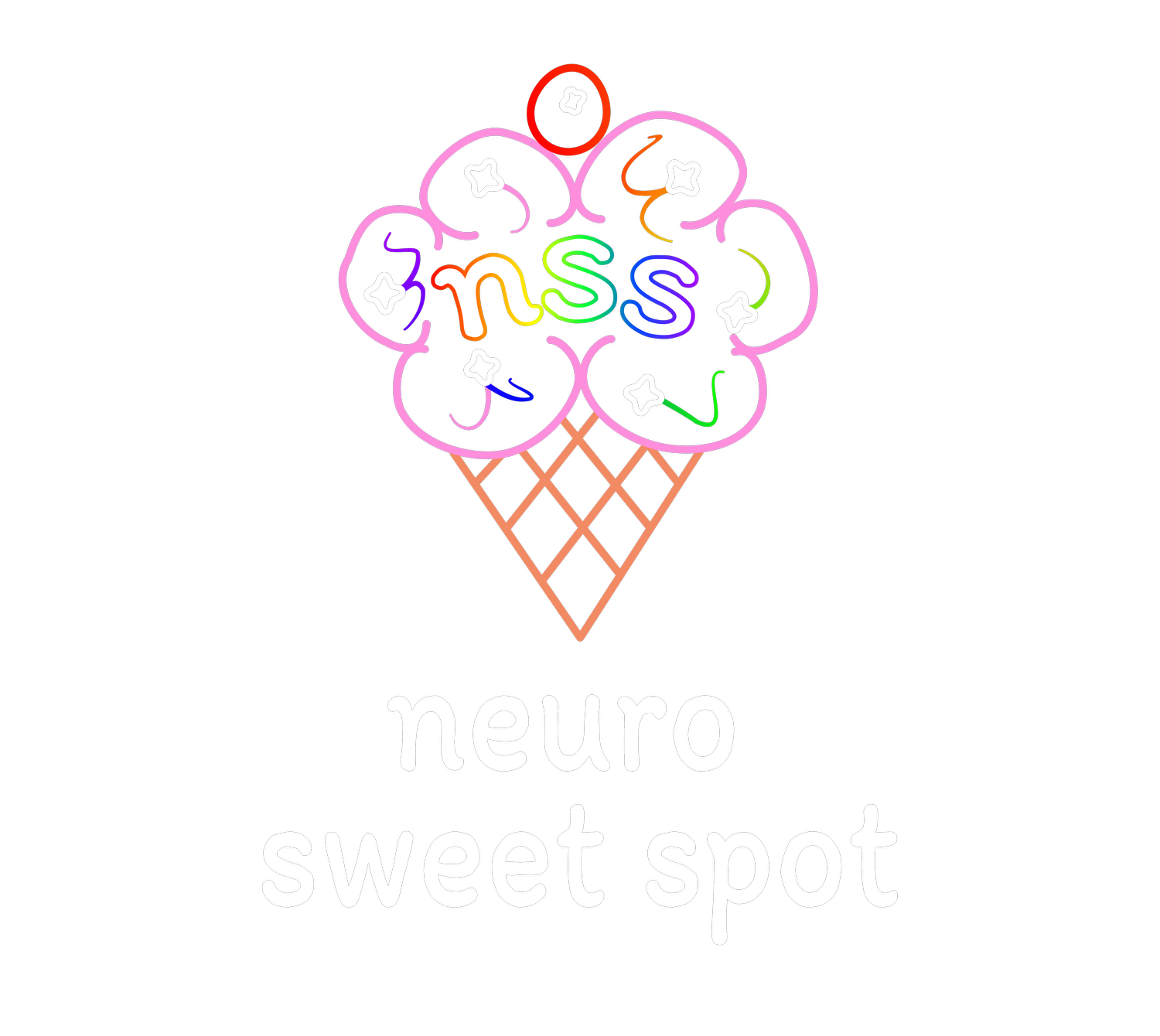
Education and Tangible Resources:
Dive Into Insights and Tips
Discover Your Brain. Discover You.
Clarity brings confidence as you find your Neuro Sweet Spot.
Rainbow Brains: Embracing Neurodiversity & Supporting All Kinds of Minds
Not Every Brain Is a “Blue Brain” (And That’s a Good Thing)
The world is largely designed for blue brains—the standard, the expected, the default.
But not everyone is a blue brain.
Some of us are orange brains—creative, spontaneous, nonlinear.
Some are green brains—deep thinkers, hyper-focused, pattern seekers.
Others are every shade in between.
The challenge? Blue-brain society often expects everyone to act blue.
If you’re not a blue brain, you’ve probably been told (explicitly or subtly) to:
“Just focus.”
“Stop being so sensitive.”
“Try harder to fit in.”
But what if the goal isn’t becoming blue—it’s learning to be your own color and thrive in a blue world?
How to Be an Orange or Green Brain in a Blue-Brain World
The key is safety and capability—when we feel safe and supported, we can:
Drop the mask of trying to “look blue.”
Ask for what we actually need, not what others assume we need.
This takes unlearning and relearning:
Instead of asking “How can I be more blue?”, we ask:
“How can I exist as an orange or green brain without burning out?”
“What supports do I actually need to function at my best?”
“Where do I feel safe enough to stop masking?”
Dropping the Mask (When It’s Safe to Do So)
Masking (pretending to be blue) is a survival skill.
But masking 24/7 leads to:
Burnout
Anxiety
Feeling disconnected from ourselves
The goal isn’t to never mask—it’s to only mask when we truly need to.
How do we know when it’s safe enough to be our true color?
Who are the people that accept us as we are?
What environments allow us to function naturally?
Where do we feel less pressure to “perform” ‘neurotypicality’?
The Forest Analogy: Finding YOUR Forests, Not Theirs
Everyone has their own forest—the challenges, struggles, and overwhelming places in life.
The mistake?
We are often told where the “dangerous” forests are based on someone else’s experience.
But their forest might not be your forest.
Some people fear social rejection—their forest is public speaking or making friends.
Others struggle with sensory overload—their forest is crowded places, bright lights, chaotic environments.
Step one is identifying YOUR forests—not someone else’s.
How to Prepare for the Forest (Without Losing Yourself in It)
Forests are not terrible spaces, in fact, many people enjoy hiking, camping, and being in forests. Our life is much bigger and richer when we learn to embrace navigating the forests instead of trying to avoid the forests.
Our life becomes very small when we believe the only answer is avoiding every forest.
Freedom comes in building your ability to handle any forest that you come up to.
but doing so with the right tools.
Preparation = knowing the real risks and building the right skills.
Wrong question: “How do I force myself through this?”
Better question: “What do I need to feel safer while doing this?”
Examples of preparation:
Sensory supports: Earplugs, sunglasses, fidget tools
Coping strategies: dGrounding techniques, breathing exercises
Self-advocacy skills: Learning to ask for breaks, accommodations, or modifications
The Goal: Thriving in Your Own Color
You do not need to become “blue” to be successful.
The goal is:
Understanding your color.
Building a life that works for YOUR brain.
Finding the places where you don’t have to mask.
When we stop striving to change our color and instead learn how to navigate the world in our own way, we create space for real growth.
Key Takeaways
Not all brains are “blue”—and that’s a good thing. - embrace the unique color of you
Masking is sometimes necessary, but not all the time.
Your “forests” are unique to you—don’t base them on someone else’s fears.
Being prepared for challenges doesn’t mean erasing who you are—it means equipping yourself to move through the world on your terms.

